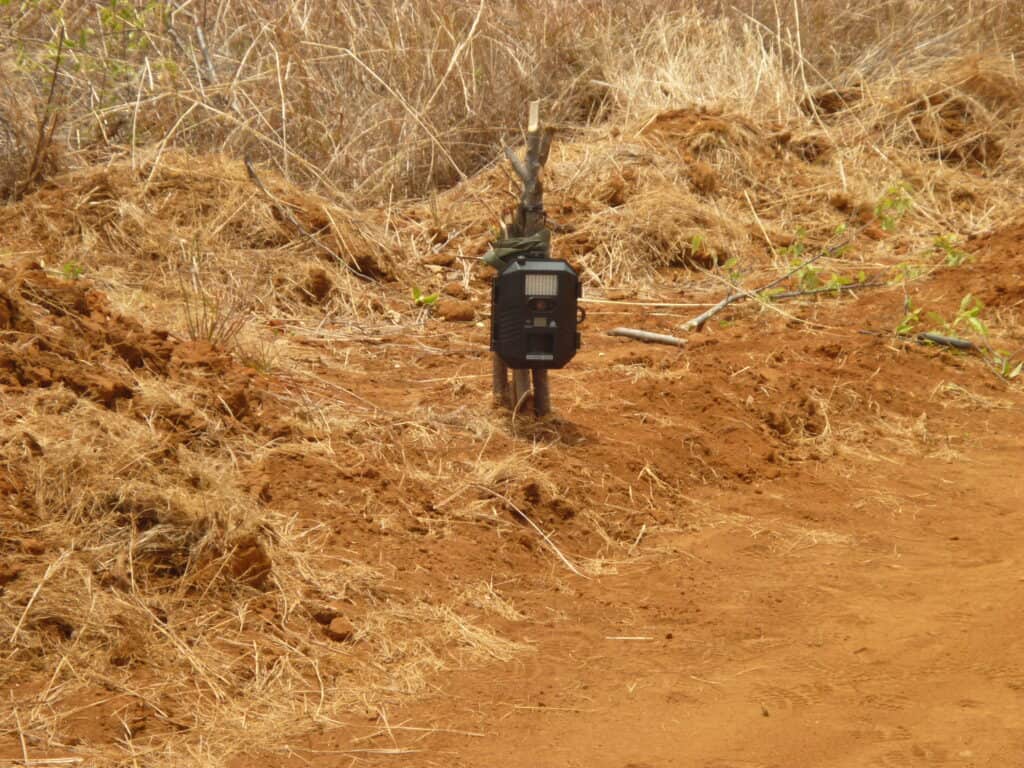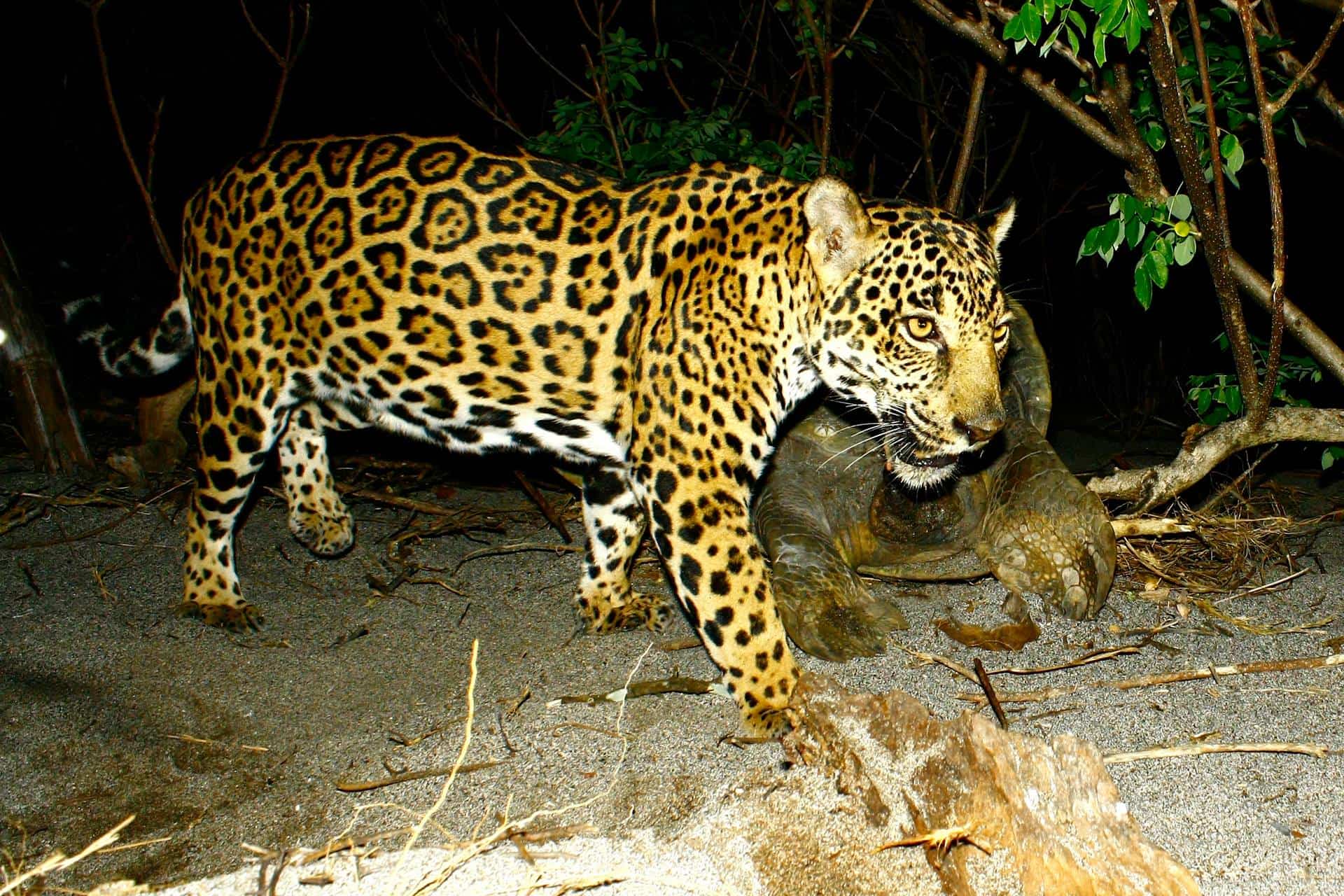Share this article
Wildlife Featured in this article
- Jaguar
- Green sea turtle
- Olive ridley sea turtle
- White-tailed deer
- Central American tapir
Wild Cam: Female jaguars avoid trails—probably to save cubs from males
Cameras along game trails may not give an accurate view of the species
Trails are a convenient place to set up cameras when searching for jaguars in Costa Rica. The trouble is, they may only show half the picture—females could be avoiding these areas.
“The females use the off-trail locations,” said Victor Montalvo, assistant professor in wildlife management at the National University in Costa Rica.
For a study published recently in the Wildlife Society Bulletin, Montalvo and his colleagues set up trail cameras in 2017 during the wet and dry seasons in the Guanacaste Conservation Area, which includes the Guanacaste and Santa Rosa national parks in northwestern Costa Rica, to learn more about jaguars (Panthera onca) there. They put the cameras on trails as well as non-trail locations, like denser forest and beaches.
This area has changed a lot in the past half century or so. Until about 50 years ago, much of the area was deforested for farming, and jaguars were seldom seen. But forest protections instituted with the creation of national parks meant a return of many prey species like white-tailed deer (Odocoileus virginianus) and the Central American tapir (Tapirus bairdii).
The trail cameras revealed that the population of jaguars has recovered since a low point more than two decades ago.
“As long as you recover the forest and increase protection from poaching and human fires, you can recover the prey populations,” Montalvo said.

The researchers found that some bias was involved with placement, though. Male jaguars are more prone to use trails, for example. But females with cubs were more likely to opt for denser forest away from trails.
That may be to protect their cubs from infanticide, Montalvo said. Male jaguars will sometimes kill cubs in an effort to mate with the mothers after as well as to avoid competition in the future with unrelated offspring.
A unique diet
Females are also found along the beaches during sea turtle nesting season—another reason they don’t show up on trail cameras. Some females seem to time the nursing of their cubs to coincide with turtle nesting. With thousands of sea turtles crawling up onto the beaches to lay eggs every year, a whole host of predators time their foraging to coincide with the turtles. It’s not the eggs that attract the jaguars, though. It’s the turtles themselves.
“The sea turtle is prey that doesn’t try to attack or repel the jaguar,” Montalvo said. “It’s pretty easy prey.”
This photo essay is part of an occasional series from The Wildlife Society featuring photos and video images of wildlife taken with camera traps and other equipment. Check out other entries in the series here. If you’re working on an interesting camera trap research project or one that has a series of good photos you’d like to share, email Josh at jlearn@wildlife.org.
This article features research that was published in a TWS peer-reviewed journal. Individual online access to all TWS journal articles is a benefit of membership. Join TWS now to read the latest in wildlife research.
Header Image: Male jaguars make more use of trails than females. Credit: Kevin Lloyd








